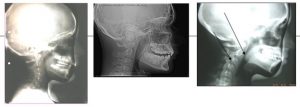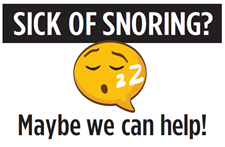
These are the adaptations, to make sure you can breathe. You can see the different adaptations from curving backwards, which is normal, but with a smooth curve, to the opposite, where the neck curves forward. The arrows point out the airway and where the nerves come out between the vertebrae. Each of these teenagers had headaches when they woke and neck pain during the day. This is because, while these positions allowed them to breathe, such positions are maintained with muscles that squeeze nerves and get tired and filled with lactic acid.
The jaw position that stops snoring, is almost always the same position that stops TMJ problems and headaches, as explained above.
Interestingly, the same nerve that supplies the jaw joint, the chewing muscles, teeth and even the white of the eye, is the same nerve that supplies (the protective skin in) the front of the brain. This explains why using an anti-snoring device can frequently reduce or stop migraines. (Bartsch, 2003)

